Tri Nguyen Dang
Dependency Tasks Offloading and Communication Resource Allocation in Collaborative UAVs Networks: A Meta-Heuristic Approach
Aug 16, 2022



Abstract:In recent years, unmanned aerial vehicles (UAVs) assisted mobile edge computing systems have been exploited by researchers as a promising solution for providing computation services to mobile users outside of terrestrial infrastructure coverage. However, it remains challenging for the standalone MEC-enabled UAVs in order to meet the computation requirement of numerous mobile users due to the limited computation capacity of their onboard servers and battery lives. Therefore, we propose a collaborative scheme among UAVs so that UAVs can share the workload with idle UAVs. Moreover, current task offloading strategies frequently overlook task topology, which may result in poor performance or even system failure. To address the problem, we consider offloading tasks consisting of a set of sub-tasks, and each sub-task has dependencies on other sub-tasks, which is practical in the real world. Sub-tasks with dependencies need to wait for the resulting signal from preceding sub-tasks before being executed. This mechanism has serious effects on the offloading strategy. Then, we formulate an optimization problem to minimize the average latency experienced by users by jointly controlling the offloading decision for dependent tasks and allocating the communication resources of UAVs. The formulated problem appears to be NP-hard and cannot be solved in polynomial time. Therefore, we divide the problem into two sub-problems: the offloading decision problem and the communication resource allocation problem. Then a meta-heuristic method is proposed to find the sub-optimal solution of the task offloading problem, while the communication resource allocation problem is solved by using convex optimization. Finally, we perform substantial simulation experiments, and the result shows that the proposed offloading technique effectively minimizes the average latency of users, compared with other benchmark schemes.
Collaboration in the Sky: A Distributed Framework for Task Offloading and Resource Allocation in Multi-Access Edge Computing
Jul 30, 2021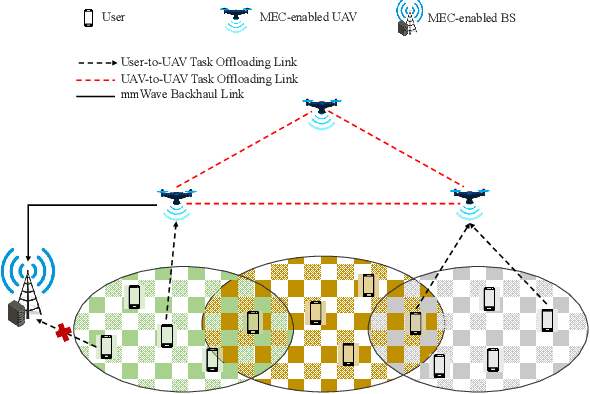
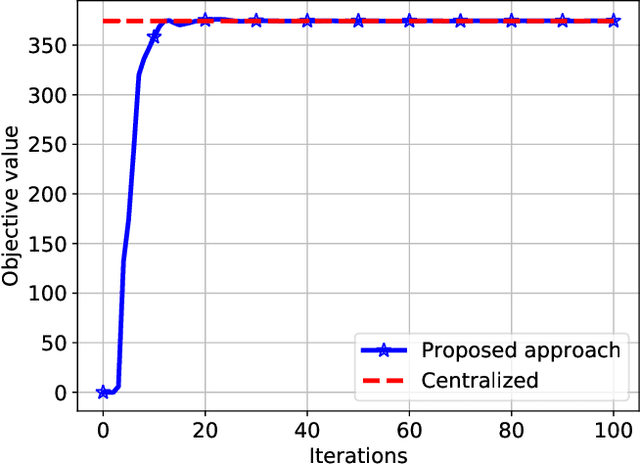
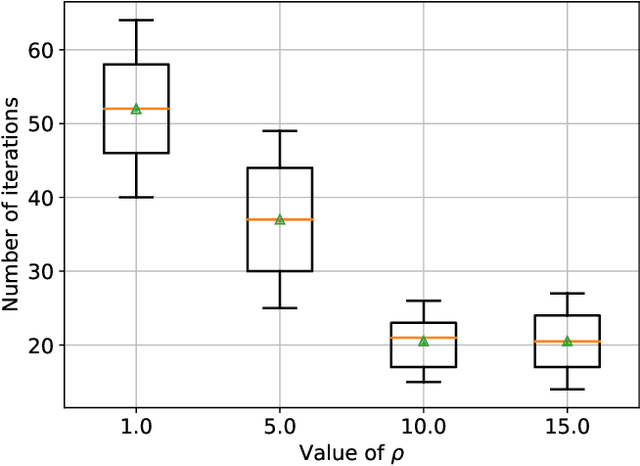
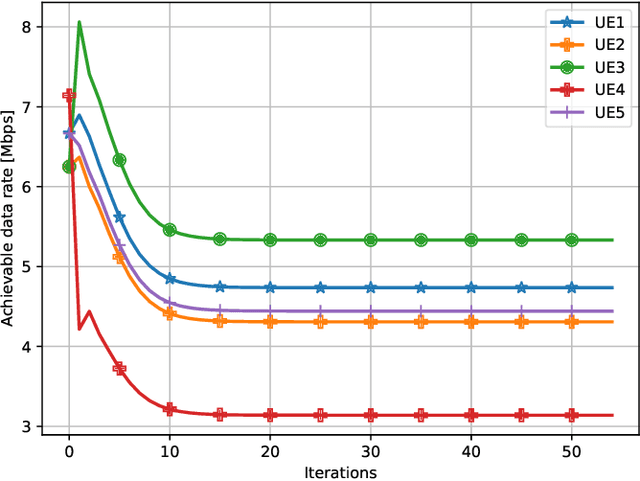
Abstract:Recently, unmanned aerial vehicles (UAVs) assisted multi-access edge computing (MEC) systems emerged as a promising solution for providing computation services to mobile users outside of terrestrial infrastructure coverage. As each UAV operates independently, however, it is challenging to meet the computation demands of the mobile users due to the limited computing capacity at the UAV's MEC server as well as the UAV's energy constraint. Therefore, collaboration among UAVs is needed. In this paper, a collaborative multi-UAV-assisted MEC system integrated with a MEC-enabled terrestrial base station (BS) is proposed. Then, the problem of minimizing the total latency experienced by the mobile users in the proposed system is studied by optimizing the offloading decision as well as the allocation of communication and computing resources while satisfying the energy constraints of both mobile users and UAVs. The proposed problem is shown to be a non-convex, mixed-integer nonlinear problem (MINLP) that is intractable. Therefore, the formulated problem is decomposed into three subproblems: i) users tasks offloading decision problem, ii) communication resource allocation problem and iii) UAV-assisted MEC decision problem. Then, the Lagrangian relaxation and alternating direction method of multipliers (ADMM) methods are applied to solve the decomposed problems, alternatively. Simulation results show that the proposed approach reduces the average latency by up to 40.7\% and 4.3\% compared to the greedy and exhaustive search methods.
Edge-assisted Democratized Learning Towards Federated Analytics
Dec 01, 2020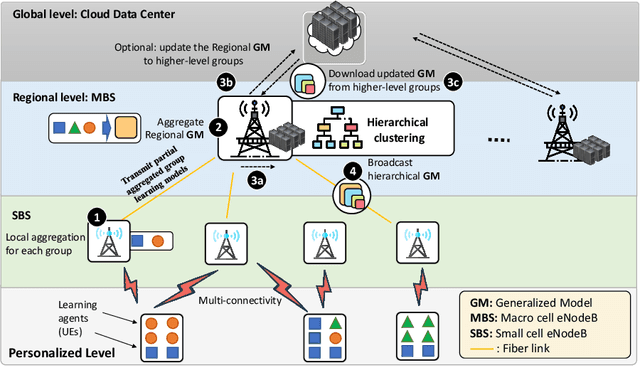
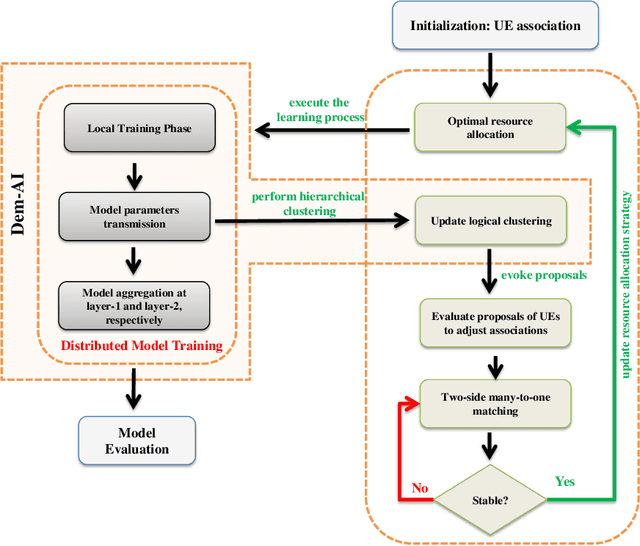
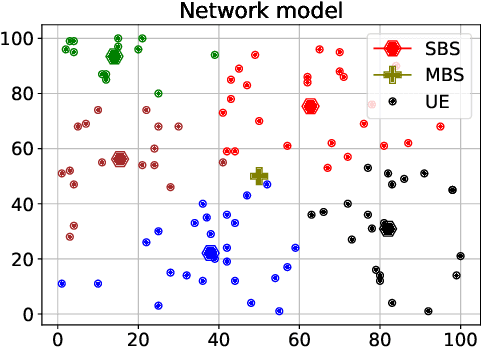
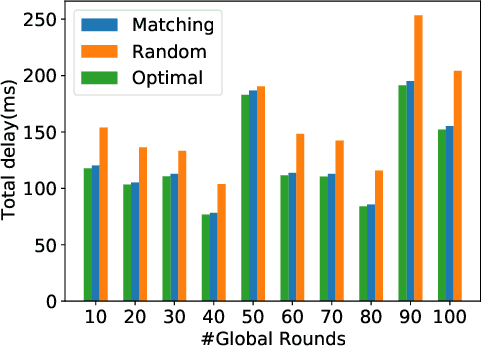
Abstract:A recent take towards Federated Analytics (FA), which allows analytical insights of distributed datasets, reuses the Federated Learning (FL) infrastructure to evaluate the population-level summary of model performances. However, the current realization of FL adopts single server-multiple client architecture with limited scope for FA, which often results in learning models with poor generalization, i.e., an ability to handle new/unseen data, for real-world applications. Moreover, a hierarchical FL structure with distributed computing platforms demonstrates incoherent model performances at different aggregation levels. Therefore, we need to design a robust learning mechanism than the FL that (i) unleashes a viable infrastructure for FA and (ii) trains learning models with better generalization capability. In this work, we adopt the novel democratized learning (Dem-AI) principles and designs to meet these objectives. Firstly, we show the hierarchical learning structure of the proposed edge-assisted democratized learning mechanism, namely Edge-DemLearn, as a practical framework to empower generalization capability in support of FA. Secondly, we validate Edge-DemLearn as a flexible model training mechanism to build a distributed control and aggregation methodology in regions by leveraging the distributed computing infrastructure. The distributed edge computing servers construct regional models, minimize the communication loads, and ensure distributed data analytic application's scalability. To that end, we adhere to a near-optimal two-sided many-to-one matching approach to handle the combinatorial constraints in Edge-DemLearn and solve it for fast knowledge acquisition with optimization of resource allocation and associations between multiple servers and devices. Extensive simulation results on real datasets demonstrate the effectiveness of the proposed methods.
Self-organizing Democratized Learning: Towards Large-scale Distributed Learning Systems
Jul 07, 2020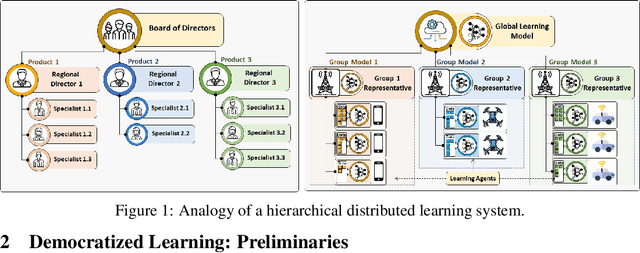
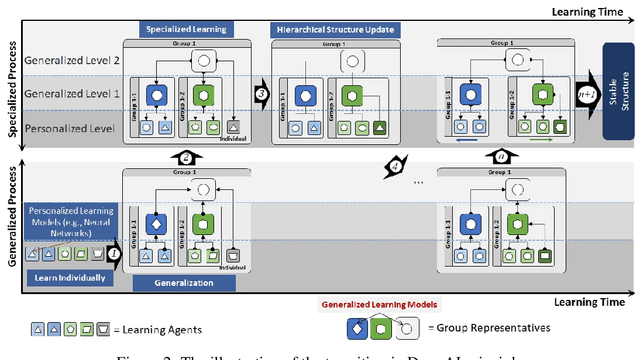
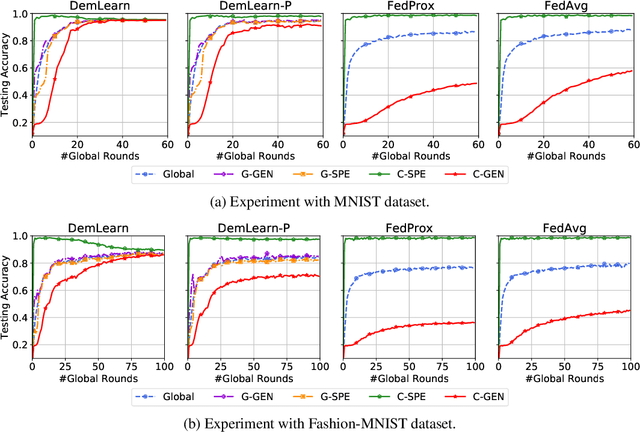

Abstract:Emerging cross-device artificial intelligence (AI) applications require a transition from conventional centralized learning systems towards large-scale distributed AI systems that can collaboratively perform complex learning tasks. In this regard, democratized learning (Dem-AI) (Minh et al. 2020) lays out a holistic philosophy with underlying principles for building large-scale distributed and democratized machine learning systems. The outlined principles are meant to provide a generalization of distributed learning that goes beyond existing mechanisms such as federated learning. Inspired from this philosophy, a novel distributed learning approach is proposed in this paper. The approach consists of a self-organizing hierarchical structuring mechanism based on agglomerative clustering, hierarchical generalization, and corresponding learning mechanism. Subsequently, a hierarchical generalized learning problem in a recursive form is formulated and shown to be approximately solved using the solutions of distributed personalized learning problems and hierarchical generalized averaging mechanism. To that end, a distributed learning algorithm, namely DemLearn and its variant, DemLearn-P is proposed. Extensive experiments on benchmark MNIST and Fashion-MNIST datasets show that proposed algorithms demonstrate better results in the generalization performance of learning model at agents compared to the conventional FL algorithms. Detailed analysis provides useful configurations to further tune up both the generalization and specialization performance of the learning models in Dem-AI systems.
 Add to Chrome
Add to Chrome Add to Firefox
Add to Firefox Add to Edge
Add to Edge